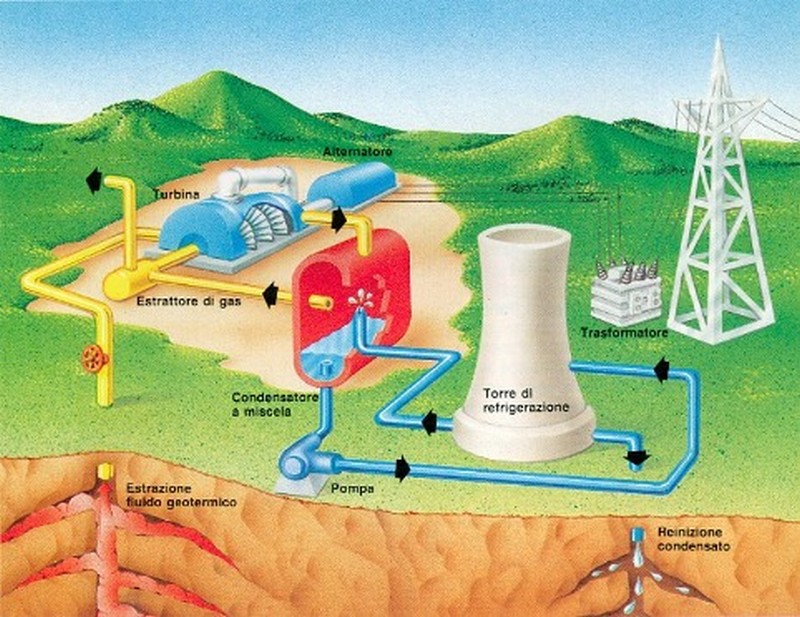Geothermal energy: the green potential still to be developed

A growing number of countries are exploring the potential to develop their geothermal energy capacity, as governments look to expand their energy portfolios to include a wider range of renewable sources.
As the UK assesses its deep geothermal potential, a major Japanese utility is betting big on geothermal power in Germany and Kenya is taking a regional approach to build capacity. Increased investment in the sector is expected to continue to support technological breakthroughs to attract investor interest and make operations more economically viable.
Geothermal operations use steam to produce energy. This steam is derived from reservoirs of hot water, typically a few miles below the earth's surface. The steam is used to turn a turbine, which powers a generator to produce electricity. There are three varieties of geothermal power plants: dry steam, flash steam, and binary cycle.
 Dry steam power plants use underground steam resources, piping steam from underground wells to a power plant. Flash steam is the most common form, using geothermal tanks of water with temperatures above 182°C. Hot water travels through wells in the ground under its own pressure, which decreases as it rises to produce steam to power a turbine. Finally, binary steam power plants use the heat from hot water to boil a working fluid, typically an organic compound with a low boiling point, which is then vaporized in a heat exchanger and used to spin a turbine .
Dry steam power plants use underground steam resources, piping steam from underground wells to a power plant. Flash steam is the most common form, using geothermal tanks of water with temperatures above 182°C. Hot water travels through wells in the ground under its own pressure, which decreases as it rises to produce steam to power a turbine. Finally, binary steam power plants use the heat from hot water to boil a working fluid, typically an organic compound with a low boiling point, which is then vaporized in a heat exchanger and used to spin a turbine .
The British Geological Survey (BGS) and Arup, a UK engineering consultancy, recently developed a White Paper entitled 'The case for deep geothermal energy — unlocking investment at scale in the UK', funded by the UK government. It aimed to assess opportunities for the construction of deep geothermal projects across the country to help diversify Britain's renewable energy mix.
To develop deep geothermal systems, companies need to drill deep boreholes to reach higher temperature heat sources at depths greater than 500m. There is significant potential to develop these assets in the UK, but the complex drilling operations come at a high cost, which has so far deterred developers.
However, as technologies improve, thanks to increased funding for research and development in the renewable energy sector, the number of areas where geothermal exploitation is economically viable is expected to increase. Most of the UK's deep geothermal resources are found in deep sedimentary basins across the country. THE
The White Paper recommends that the Government promote geothermal energy as one of the UK's renewable energy sources to boost investor confidence and promote awareness of the energy source. The establishment of a regulatory body could also support the development of new projects, while a licensing system could help streamline future projects.
In Europe so far the champion has been Iceland, while Italy is a traditional producer, but with limited growth
From now until 2030, the lion's share will be taken by the Netherlands and Germany. Italy, rich in volcanoes and thermal waters, will stand by and watch…
In Japan, one of the country's largest utility groups, Chubu Electric Power, has announced plans to acquire a geothermal power project in Germany. Chabu is buying a 40% stake in the company, which plans to develop a first-of-its-kind geothermal and district heating project in Bavaria. It will use Eavor-Loop technology developed by Canadian start-up Eavor, transforming the Earth's core underground heat into renewable energy, without the need to discover underground hot water tanks. Chabu has already invested in Eavor itself in 2022 and hopes to drive commercialization of the new technology in Germany.
Meanwhile, in 2022, Kenya, which drilled its first geothermal well in the 1950s and opened its first power plant in 1981, finished seventh in the world in geothermal power generation. Kenya produces about 47 percent of its energy from geothermal resources. It is one of only two African countries, along with Ethiopia, that produces geothermal energy. The East African country hopes to assist neighboring states with their geothermal ambitions, as they try to support the regional development of clean energy resources in line with the global green transition. KenGen, the government agency that operates Kenya's geothermal power plant, is providing technical support to other countries in the region, having already drilled multiple geothermal wells in Ethiopia and Djibouti to assess their potential.
And this month, the governments of Indonesia and New Zealand confirmed their cooperation on geothermal energy projects. Indonesia-Aotearoa New Zealand Geothermal Energy Program (PINZ) has been extended for 2023-2028, with a US$9.9 million funding commitment from the New Zealand government to develop Indonesia's geothermal industry. This partnership has existed for over a decade, to support Indonesia's clean energy transition.
Several governments around the world are increasing their investments in geothermal energy research and development, with the aim of diversifying the renewable energy mix and reducing the dependence on a single energy source. Investments in geothermal energy technology in recent years have already led to advances that should make new operations more economically viable, with further breakthroughs expected to come with the creation of the global geothermal market.

Thanks to our Telegram channel you can stay updated on the publication of new articles from Economic Scenarios.
The article Geothermal energy: the green potential still to be developed comes from Scenari Economici .
This is a machine translation of a post published on Scenari Economici at the URL https://scenarieconomici.it/energia-geotermica-il-potenziale-green-ancora-tutto-da-sviluppare/ on Mon, 31 Jul 2023 06:00:43 +0000.

